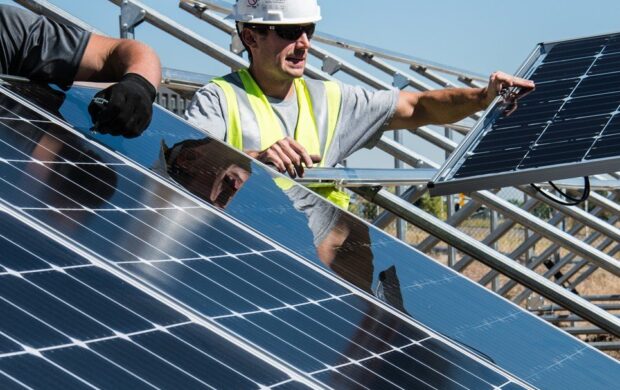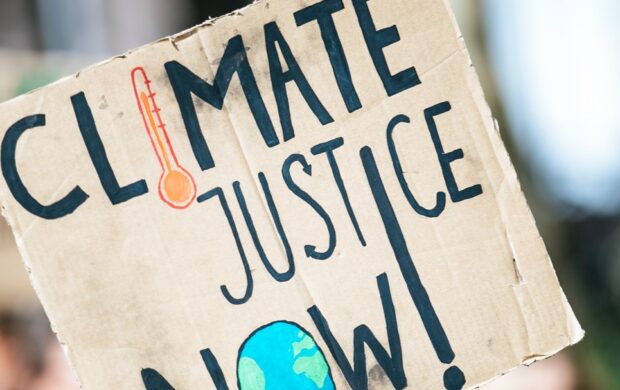Co-authored by Siddhi Ashar and Ariel Muller
People leading change within the energy transition are often aware of the connection between repatterning power and our collective ability to foster transformation of the energy sector. It is a notion that becomes increasingly evident when we observe the entrenched grip of those in power, often impeding the swift progress of the transition, while those most affected by these decisions find themselves side-lined from the decision-making. India’s extension to the fundamental right to life now includes the right to be protected and free from the adverse effects of climate change [As part of the landmark case to save the endangered great Indian bustard from the transmissions lines from solar and wind power plants] displays a shift with those in power recognising especially certain groups such as indigenous, tribals, women and low-income households are particularly vulnerable.
However, effecting and implementing this change is not always easy; in fact, it might be the hardest part of enabling change.
In response to this need, the Future Centre is exploring the role of power in enabling just and regenerative transitions and what this means for those leading change, starting with a focus on the energy transition.
Forum’s vision is for energy system that is one that is radically decarbonised and resilient in a rapidly changing world; depends wholly on renewables and/or other carbon-neutral sources; actively engages those who produce, trade and consume energy in the sector’s development; and prioritises universal energy access by providing affordable, reliable, ecologically safe and human-rights respecting energy.
We believe that one of the key levers to delivering on this transition is recognising the role power plays and beginning to imagine the innovative and resilient models, practices or relations that distribute decision-making more equitably, while also contributing to overall health and transformation of the energy sector.
We believe that repatterning power can emerge from anywhere within the system; every actor has a role to play.
We are sharing three signals for how we see change happening currently and what it might mean for those learning about how to work with power dynamics in the energy system.
How are actors in the energy sector changing power dynamics?
- Incumbents are finding ways to address imbalanced power dynamics:
As part of the release of British Columbia’s (BC) new critical minerals strategy, there was a recognition of not only the need for high standards for the production of minerals to battle climate impacts but also to align with the First Nations Energy and Mining Council’s critical minerals strategy. Ensuring that the policy reflected the needs expressed by the First Nations (Indigenous peoples in Canada who are neither Inuit nor Métis) which included the need to drive new opportunities and create new jobs required an intentional engagement with the First Nations and to provide support for capacity building for Indigenous Peoples to develop policies and refine the trajectory taken in the future. This has led to a promising start towards a more collaborative effort to co-develop future plans, understanding implications for those inhabiting the regions and opportunities for socio-economic opportunities.
In a first of its kind, both Sami reindeer herders and commercial developers in Sweden recognised that renewable energy companies, as part of the Nordic country’s push for a green transition, are having an unintended detrimental impact on the community. The government rules have previously been ill-equipped to prevent conflicts between those who will be most impacted, and it has led to delays in development. “A growing number of successful court rulings wherein the Sámi have convincingly argued about these impacts and risks have significantly delayed or stopped planned industry projects,” Klocker Larsen, Senior Research Fellow from Stockholm Environment Institute added. This is impacting how developers choose to engage herding communities and are beginning to recognize the role of dialogue in resolving conflicts, increasing legitimacy, and societal acceptance of transition projects. - Indigenous Peoples leading and developing processes to engage with industry and governments:
Facing the potential impacts and rights violations of future investment projects to match the growing demand for critical minerals — and to make sure they have a seat at the discussion table, the Krenak peoples have developed their own protocols for investors visiting their lands: their own self-determined protocol to implement their free, prior and informed consent (FPIC). For Krenak, FPIC isn’t a checkbox but rather a pathway to continuous dialogue for communities living on mineral-rich lands to be prepared and organised with consultations with investors, to understand and create a development paradigm that states what resources, livelihoods, and sites are they willing to sacrifice or preserve. This ensures communities are informed of their legal rights and equipped to demand increased involvement of Indigenous peoples in decision-making.
Similarly, the First Nations in BC have proactively created a critical minerals strategy in 2024 which is a grassroots plan developed by community members about recommendations for the governments of Canada and BC to work on a trilateral basis with them on a consent-based extraction of critical minerals from their lands. This was a step towards ensuring First Nations are full partners in discussions around plans and profits and also keeping in mind critical environmental considerations. - Recognising the need for industry and government actors to take a systemic lens to innovation and access:
While universal energy access especially in the form of solar mini-grids offers a promising solution to extending electricity in regions that are off-grid and underserved such as Sub-Saharan Africa, there is a risk of reproducing the previous system where people in these regions remain off-grid due to a lack of financial support, last mile investments in maintenance and support. Such extension efforts need to consider how investments in wider economic and social development regions through employment opportunities, knowledge transfer initiatives around maintenance, investments in education could go address systemic barriers and support in scaling these innovations.
Along the same lines, while the Green Energy Option Program in the Philippines offers consumers a choice of renewable energy suppliers there remains a risk of under-utilisation and lack of adoption after a certain period due to the lack of economic incentives and provisions in last mile support. How can industry actors consider a more systemic approach that takes into consideration, contextual needs and nuances that may influence the adoption and scale of these critical technologies? How can we ensure not re-entrench power dynamics of access along our path to change?
Join the Futures Centre’s network of changemakers:
This is an ongoing conversation, especially for change actors working with industry or government actors closely. How do we have these conversations around power, around ensuring actors reexamine their influence, or even how marginalized communities have the space to reclaim agency and engage in dialogue?
While these have been some of the findings from our internal discussions, we aim to open the space for dialogues around where power is shifting and how it is contributing to a more reimagined energy transition that reflects and serves the needs of citizens and communities in the future.
We are doing so by hosting a futures webinar at the end of May exploring some of the questions we have raised and what implications they may hold for the transition’s trajectory.
To join us for the webinar or to learn more about this work, please get in touch with Siddhi at s.ashar@forumforthefuture.org or Ariel at a.muller@forumforthefuture.org












Join discussion